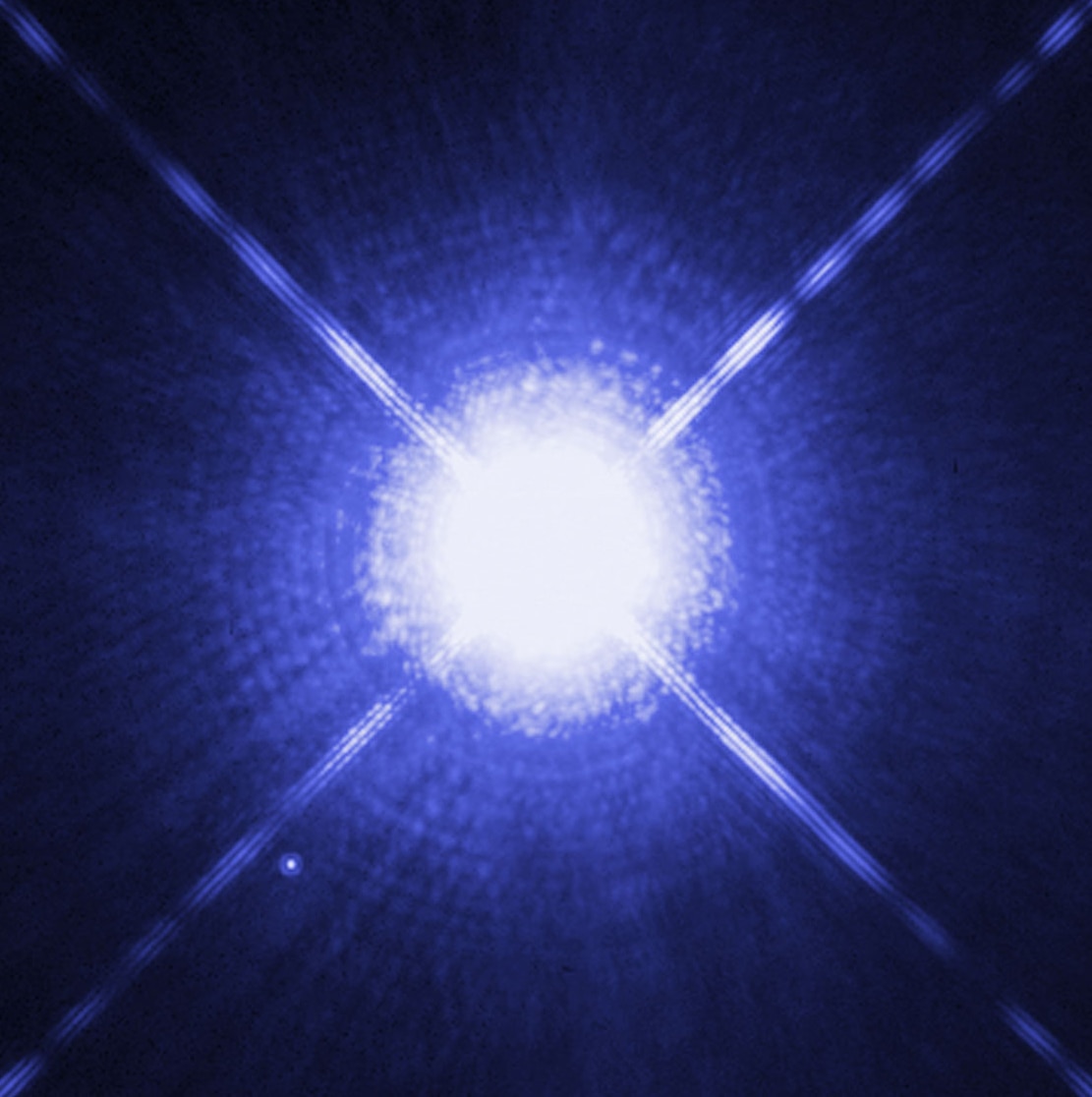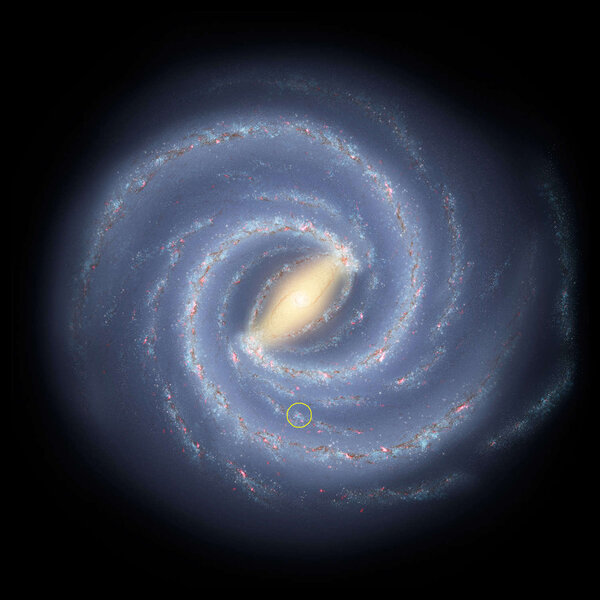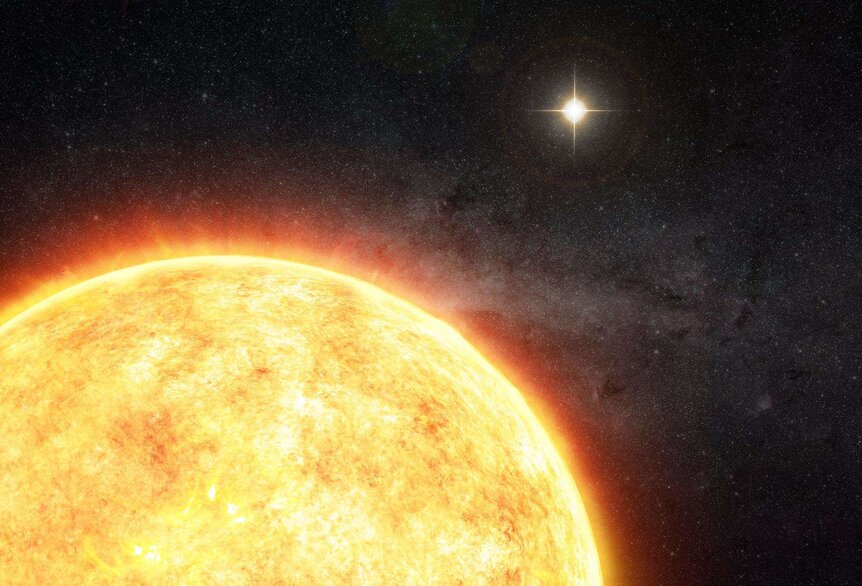Create a free profile to get unlimited access to exclusive videos, sweepstakes, and more!
The Sun is surrounded by millions of binary stars!

The Sun swings around its galactic orbit alone, a solo voyage through space.
But for half the stars in the Milky Way that's not the case. They exist with a companion, a duo traveling the cosmos together. Bound by gravity, these binary stars come in a bewildering variety of characteristics and in many ways are the key to understanding the cosmos.
And now we know there are well over a million of them within about 3,000 light years of the Sun.
That's due to the Gaia observatory and a dedicated team of astronomers who culled the enormous stockpile of data it generated.
Gaia is a European Space Agency mission that orbits the Sun in a stable position about 1.5 million kilometers from Earth. Its mission is to measure the positions, motions, colors, and other characteristics of over nearly two billion stars in the galaxy. That's it. It doesn't specify what kind of star to look at (other than it has to be bright enough to see) or drill down to answer a specific question.
Instead, the idea is to create a vast database of stars and their physical parameters so that astronomers, imaginative as they are, can then parse it to find answers the question they have.
One question is, how many binary stars are there that we can find using Gaia data? And once we have that in hand, what can we learn about them and stars in general from the data?
And that's what the team of astronomers did. To find binaries, they looked for pairs of stars that were both the same distance from Earth (using parallax, the apparent change in position of a star over time as Gaia orbits the Sun) and moving in the same direction at the same speed — what we call proper motion. All stars we can see orbit the center of the Milky Way, and over time their position in the sky changes due to that motion. Gaia can measure extremely small changes in a star's position, yielding pretty decent measurements for ones out to 3,000 light years.
To make sure they had true binaries and not chance alignments between stars at different distances from us, they went through a series of data filters, culling the list. For example, two stars that were too far apart to be bound to each other via gravity were dropped, as were stars in clusters or part of a triple-star system.
In the end they can't eliminate chance alignments entirely, but they can show statistically that they are very low in number in their final catalog.
The results?
They found 1.26 million stars that have a 90% chance of being bound binaries, or, if they up the chance to 99%, 1.1 million stars. Either way, well over half a million binary systems within 3,000 light years of the Sun.
That right away is an amazing result. The nearest star system, Alpha Centauri, is over 4 light years away. That makes it seem like there aren't many stars close to the Sun, but that number goes up with the cube of the distance you're looking at — remember, the volume of a sphere is 4/3 x pi x radius3, and it's that radius cubed that dominates. Look out 40 light years and there will be a thousand stars. Within 400 light years there are a million.
By 3,000 light years there should be about 400 million stars*! Most are too faint for Gaia to see, though. But of the ones it can, over a million are in committed relationships with another star.
The stats: Of these binaries, 900,000 systems had both stars in them being stars like the Sun, fusing hydrogen into helium in their cores, what we call main sequence stars. 16,000 were in a system with one main sequence star and one white dwarf, the hot core of a star exposed to space after the star dies. 1,400 were in a white dwarf/white dwarf system (usually called a double degenerate system), 10,000 systems had one star being a giant — nearing the end of its life, and swollen up hugely — and 130 were both giant stars. 13,000 were systems with subgiant stars, where the star is just started to use up its fuel and is on the path to swelling up to a giant.
These numbers are immensely useful to astronomers. Stars in binaries form together from the same gas cloud, so they have the same age and composition. That helps eliminate confounding factors when trying to figure out other characteristics. Their orbit around each other gives you their masses. White dwarfs have a well understood cooling rate, so we can get their ages as well (the faintest they saw in the Gaia data were over 10 billion years old, a large fraction of the age of the Universe). Observing the subgiants and giants in these systems shows us how they evolve over time, too.
It's probably just a coincidence that the Sun isn't in a binary. Some stars are, some aren't. We've found many exoplanets in binary systems, orbiting one star or both, so it's not like single stars are the only ones with planets. But the more we know about binary stars the more informed our understanding of the way planets form, too.
And, to be honest, we don't know for sure the Sun was always solo. It's possible it was once part of a binary system. So again, learning more about them will help us understand the Sun better, which means understanding ourselves better.
Binary or non-binary, they're all stars, each worth learning about and understanding them as they are. Perhaps there's a more general lesson in there, too.
*The galaxy is a flat disk, so around this distance the geometry gets more complicated than using the distance cubed and the number increases more like distance squared.


![The two stars of the binary system [BHB2007] 11 are in the process of forming, drawing material from the disk surrounding both via a pair of filaments, wound up due to the motion of the stars around each other. Credit: ALMA (ESO/NAOJ/NRAO), Alves et al.](/sites/syfy/files/styles/scale_600/public/alma_binarystars.jpg)















